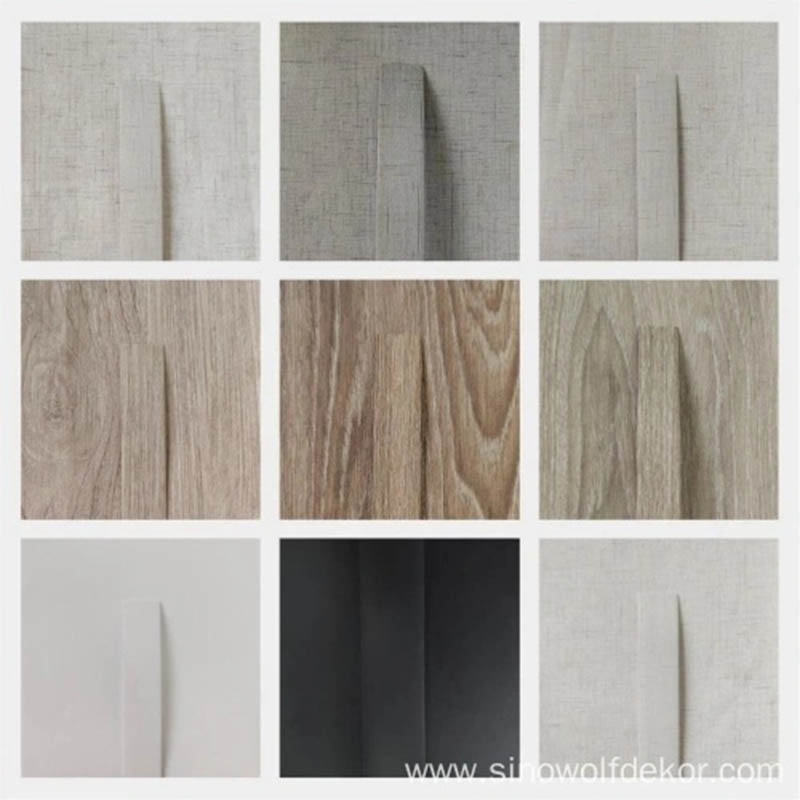In today's competitive manufacturing landscape, customization has become a key differentiator for businesses looking to cater to specific customer needs. Among the various materials and products that benefit from customization, polypropylene (PP) edge tape stands out for its wide range of applications in industries like furniture manufacturing, interior design, and retail displays. Custom color PP edge tape, in particular, has gained popularity for its ability to enhance aesthetics while providing practical benefits such as durability and protection. However, with customization comes the challenge of maintaining consistency, especially in color and quality. This article delves into the quality assurance measures essential for ensuring consistency in custom color PP edge tape.

Understanding the Importance of Consistency in Customization
Consistency is a critical factor in manufacturing, particularly when it comes to custom products. For custom color PP edge tape, consistency refers to the uniformity of color, thickness, texture, and adhesive strength across different batches of the product. Customers expect that the tape they order today will match the tape they ordered months ago, both in color and performance. Inconsistencies can lead to issues such as mismatched colors, uneven application, and compromised durability, all of which can negatively impact the final product's quality and the customer's satisfaction.
The Role of Quality Assurance in Custom Color PP Edge Tape Production
Quality assurance (QA) is the backbone of consistency in manufacturing. It involves a series of systematic processes designed to monitor and control every aspect of production, from raw material selection to the final product. In the context of custom color PP edge tape, QA ensures that every roll of tape meets the exact specifications required by the customer. This involves rigorous testing, precise color matching, and continuous monitoring throughout the production process.
1. Raw Material Selection and Inspection
The foundation of quality assurance in custom color PP edge tape begins with the selection of raw materials. Polypropylene, the primary material used in edge tape, must meet stringent quality standards to ensure it provides the necessary durability, flexibility, and resistance to wear and tear. Suppliers are carefully vetted, and raw materials undergo thorough inspection upon arrival. This includes checking for any impurities, inconsistencies in thickness, or variations in color that could affect the final product's quality.
2. Color Matching and Consistency
One of the most critical aspects of custom color PP edge tape is achieving accurate and consistent color matching. This process involves the use of advanced color matching technology, such as spectrophotometers, which can precisely measure and match colors to the customer's specifications. The color matching process starts with creating a master sample that serves as the standard for all future production. This master sample is stored under controlled conditions to prevent any changes in color over time.
During production, every batch of PP edge tape is compared against the master sample using the same color matching technology. Even the slightest deviation in color is flagged for correction. This level of precision ensures that customers receive edge tape that consistently matches their desired color, even if they place orders months apart.
3. Process Control and Monitoring
Once the raw materials and color matching are approved, the actual production of custom color PP edge tape begins. This process is closely monitored to maintain consistency in all aspects, including thickness, width, texture, and adhesive properties. Advanced machinery equipped with sensors and automated controls is used to ensure that the tape is produced within the specified tolerances. Any deviation from the set parameters is immediately detected and corrected.
In addition to machinery, human oversight is also crucial. Skilled technicians regularly inspect the tape during production to identify any potential issues that automated systems might miss. This combination of technology and human expertise ensures that the tape produced is of the highest quality and meets all customer requirements.
4. Quality Control Testing
After the production process, the custom color PP edge tape undergoes a series of quality control tests to verify its performance and durability. These tests include:
Adhesion Tests: To ensure the tape adheres properly to different surfaces without peeling or lifting over time.
Tensile Strength Tests: To verify the tape's ability to withstand stretching and pulling without breaking or deforming.
Color Fastness Tests: To confirm that the color remains consistent and does not fade when exposed to light, heat, or moisture.
Heat and Cold Resistance Tests: To ensure the tape performs well in various environmental conditions without losing its adhesive properties or structural integrity.
Each roll of tape that passes these tests is marked as meeting quality standards and is cleared for shipment to the customer. Any rolls that do not meet the required standards are either reworked or discarded, ensuring that only the best products reach the customer.
5. Traceability and Documentation
A key component of quality assurance is the ability to trace each roll of custom color PP edge tape back to its production batch. This traceability is achieved through detailed documentation at every stage of production, from raw material procurement to final testing. Each batch is assigned a unique identification code, which is recorded along with all relevant production data. This allows manufacturers to quickly identify and address any issues that may arise with a specific batch of tape.
In the event of a customer complaint or quality issue, this documentation enables a thorough investigation to determine the root cause and implement corrective actions. Traceability also helps in maintaining consistency across different orders, as manufacturers can refer to past production records to replicate the same quality and color.
6. Customer Feedback and Continuous Improvement
Quality assurance does not end with the production and delivery of custom color PP edge tape. Customer feedback plays a vital role in the continuous improvement of products and processes. Manufacturers actively seek feedback from customers to identify any areas for improvement, whether it be in color accuracy, adhesive performance, or overall product quality.
This feedback is used to refine quality assurance processes, update production techniques, and enhance raw material selection. By continuously improving their processes, manufacturers can better meet customer expectations and maintain a high level of consistency in their custom color PP edge tape.
The Impact of Consistency on Customer Satisfaction
Consistency in custom color PP edge tape is not just about meeting technical specifications; it's about ensuring customer satisfaction and building long-term relationships. Customers rely on consistent quality to maintain the integrity of their products, whether it's furniture, retail displays, or interior fixtures. Inconsistent quality can lead to costly rework, delays in production, and potential damage to the customer's brand reputation.
By implementing rigorous quality assurance measures, manufacturers can provide customers with the confidence that their orders will meet the highest standards every time. This reliability fosters trust and encourages repeat business, as customers know they can depend on the manufacturer to deliver consistent results.
Conclusion
Quality assurance is the cornerstone of consistency in custom color PP edge tape. Through meticulous raw material selection, precise color matching, process control, and rigorous testing, manufacturers can ensure that every roll of tape meets the exact specifications required by the customer. The result is a product that not only enhances the aesthetics and functionality of various applications but also delivers the reliability and performance that customers expect. In a market where customization is key, maintaining consistency is essential for success, and quality assurance is the means to achieve it.






